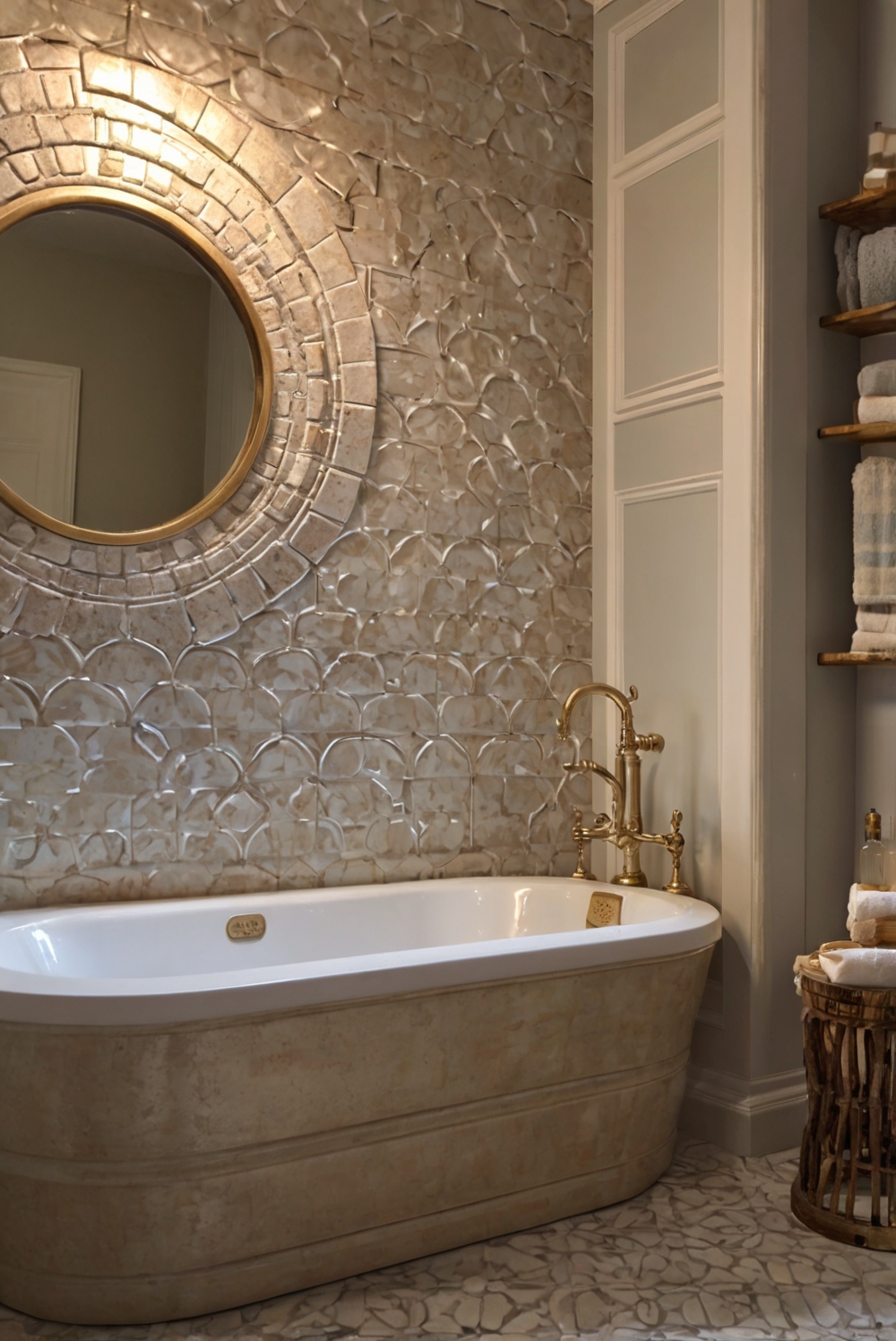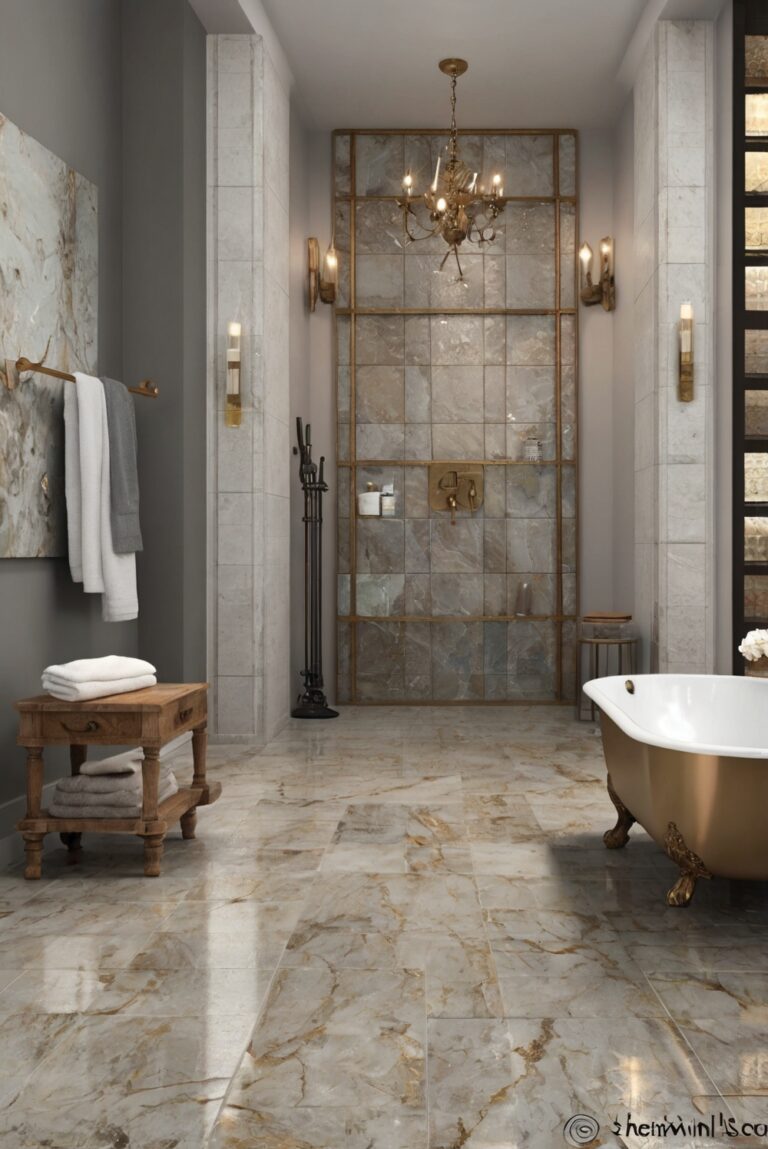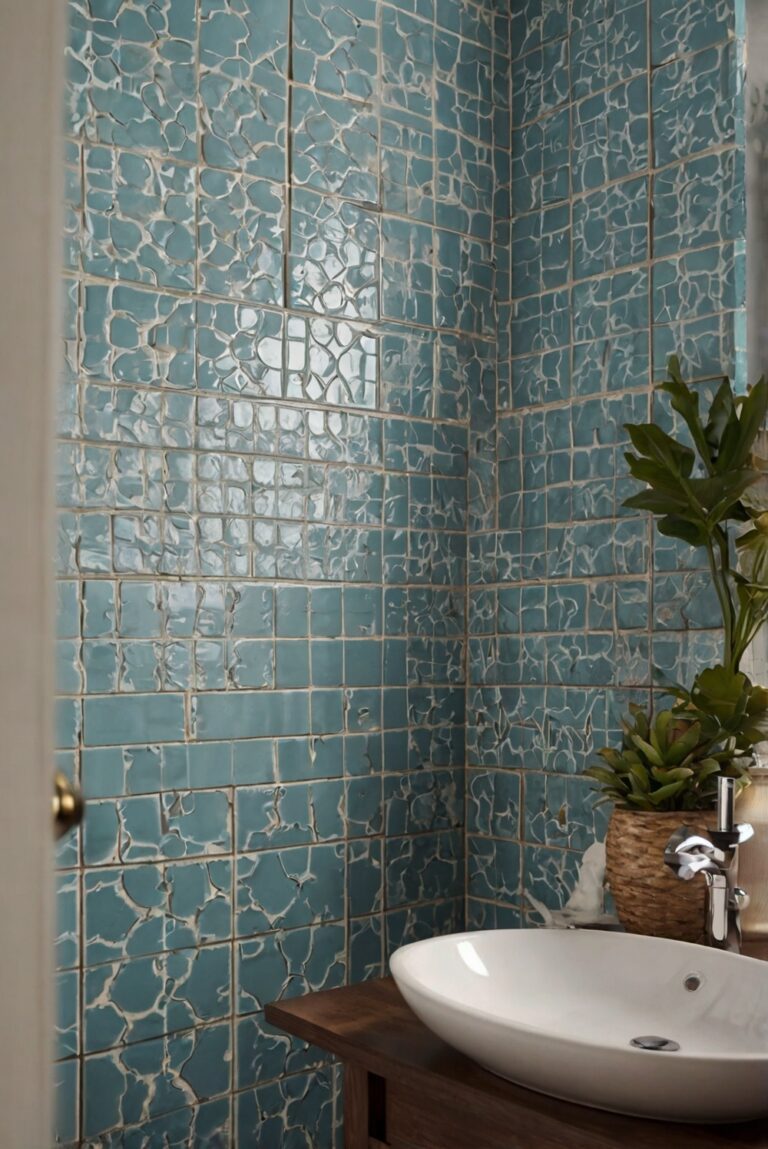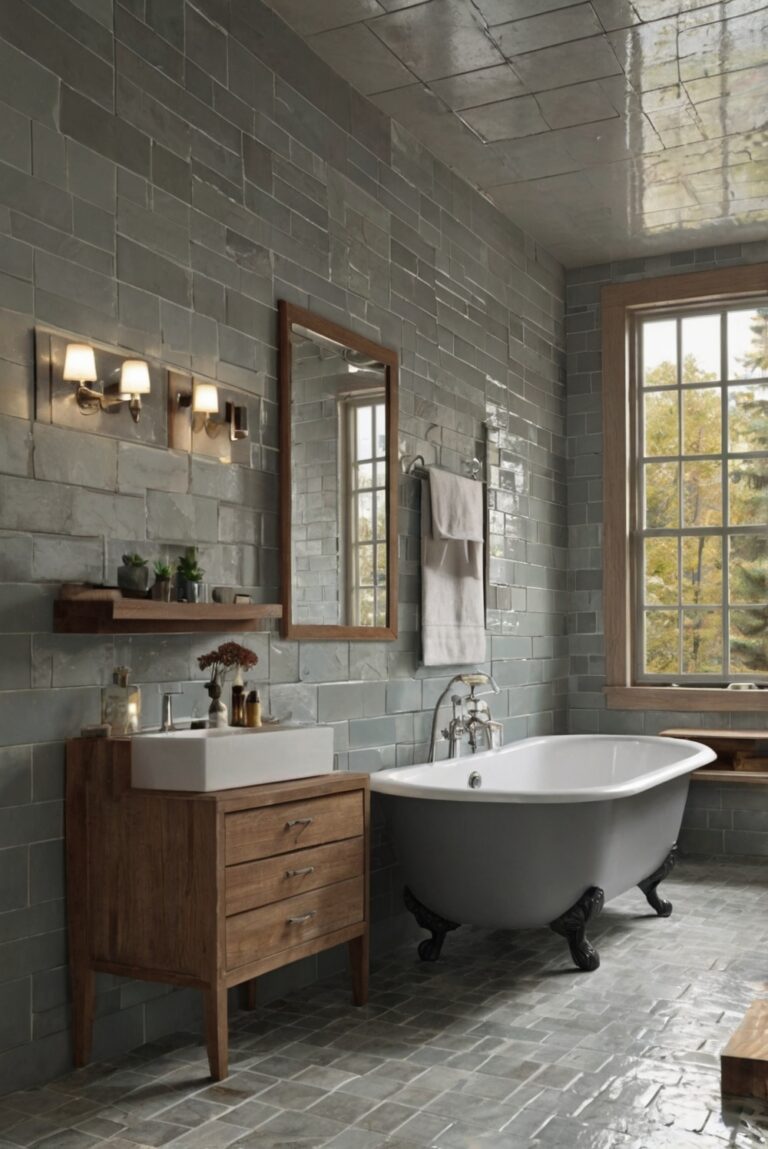Looking to elevate your bathroom design? Discover how to choose the perfect tile edging for a polished finish. A daily interior designer routine to elevate your space!
To choose the right tile edging for your bathroom, start by considering the style and color scheme of your overall home decor interior design. Look for tile edging that complements the space planning and enhances the aesthetic appeal of your bathroom. Pay attention to details like the finish, size, and material of the tile edging to ensure it fits well with the interior design space planning of your bathroom.
When selecting tile edging, it’s essential to prioritize durability and functionality. Opt for high-quality materials that can withstand moisture and frequent use in a bathroom environment. Consider the ease of installation and maintenance to make the decorating interiors process hassle-free.
To ensure a seamless transition between tiles, choose an edging style that matches the color scheme, or opt for a contrasting color for a bold statement. When in doubt, consult with designers kitchen or interior designers for expert advice on selecting the perfect tile edging for your bathroom.
Remember, the right tile edging can elevate the look of your bathroom, making it a stylish and functional space that reflects your personal style and interior bedroom design preferences.
Consider the Type of Tile
When choosing the right tile edging for your bathroom, it is essential to consider the type of tile you are using. Different types of tiles, such as ceramic, porcelain, glass, or natural stone, may require different edging options. For example, ceramic tiles may work well with metal edging, while natural stone tiles may benefit from a bullnose or rounded edge for a more seamless look.
Choose the Right Material
The material of the tile edging is crucial for both aesthetic appeal and functionality. Common materials for tile edging include metal, plastic, and PVC. Metal edging provides a sleek and modern look, while plastic and PVC edging options are more affordable and easy to install. Consider the overall style of your bathroom and choose a material that complements your tile choice.
Measure the Thickness of Your Tiles
The thickness of your tiles will also play a significant role in selecting the right tile edging. Measure the thickness of your tiles accurately to ensure that the edging you choose will fit seamlessly and provide a smooth transition between the tiles and the walls or floors. Some edging options are designed specifically for thicker tiles, so be sure to choose accordingly.
Consider the Color and Finish
In addition to the material and type of tile, the color and finish of the tile edging are essential factors to consider. The edging should complement the color scheme of your bathroom and enhance the overall design. Whether you prefer a matte, glossy, or metallic finish, ensure that the tile edging you choose blends seamlessly with your tiles and other bathroom fixtures.
Choose a Suitable Profile
The profile of the tile edging refers to its shape and design. Common profiles include straight edge, bullnose, rounded, or square edge. The profile you choose will depend on the style of your bathroom and the look you want to achieve. For a more modern and sleek appearance, a straight edge may be suitable, while a bullnose or rounded edge can provide a softer and more traditional look.
In conclusion, choosing the right tile edging for your bathroom is a crucial step in achieving a cohesive and polished design. Consider factors such as the type of tile, material, thickness, color, finish, and profile when selecting tile edging options. By paying attention to these details and ensuring that the edging complements your tiles and overall bathroom aesthetic, you can create a seamless and stylish finish that enhances the beauty of your space.
1. What types of tile edging are available for bathrooms?
There are various types of tile edging options available for bathrooms, including metal, plastic, and bullnose tiles. Metal edging provides a sleek and modern look, while plastic edging is more cost-effective and easier to install. Bullnose tiles have a rounded edge that creates a smooth transition from the tile to the wall. Each type of edging has its own benefits and aesthetic appeal, so it’s important to consider the overall design of your bathroom before choosing the right tile edging.
2. How do I determine the right size of tile edging for my bathroom?
When selecting the size of tile edging for your bathroom, consider the thickness of your tiles and the desired look you want to achieve. The most common sizes for tile edging are 3/8 inch, 1/2 inch, and 5/8 inch. Thicker tiles may require larger edging to create a seamless transition, while thinner tiles can be paired with smaller edging for a more delicate finish. It’s essential to measure the thickness of your tiles accurately and choose edging that complements their size for a cohesive look.
3. What color should I choose for my tile edging?
The color of tile edging plays a significant role in the overall aesthetic of your bathroom. Consider matching the color of the edging to the grout or tile for a seamless look, or choose a contrasting color to create a striking design element. Popular choices for tile edging colors include silver, white, black, and bronze, which can complement a variety of tile colors and styles. Ultimately, the color of the tile edging should enhance the overall design of your bathroom and create a cohesive look that ties the space together.
4. Should I consider the material of the tile edging when choosing for my bathroom?
The material of the tile edging is an essential factor to consider when choosing the right option for your bathroom. Metal edging is durable and provides a sleek, modern finish, making it ideal for contemporary bathroom designs. Plastic edging is cost-effective and easy to install, making it a popular choice for budget-friendly projects. Bullnose tiles offer a classic and elegant look with their rounded edges, which can add a touch of sophistication to any bathroom. Consider the durability, maintenance, and aesthetic appeal of each material before selecting the tile edging that best suits your needs.
5. What are some important factors to consider when choosing tile edging for my bathroom?
When selecting tile edging for your bathroom, consider factors such as the style of your tiles, the overall design aesthetic of your bathroom, the size and thickness of your tiles, and the color scheme of the space. Additionally, think about the maintenance requirements of different types of tile edging, as some materials may be more prone to staining or corrosion. It’s essential to choose tile edging that complements the existing elements in your bathroom, such as the vanity, fixtures, and accessories, to create a cohesive and visually appealing space. Take your time to research and compare different options to find the perfect tile edging that enhances the beauty and functionality of your bathroom.







